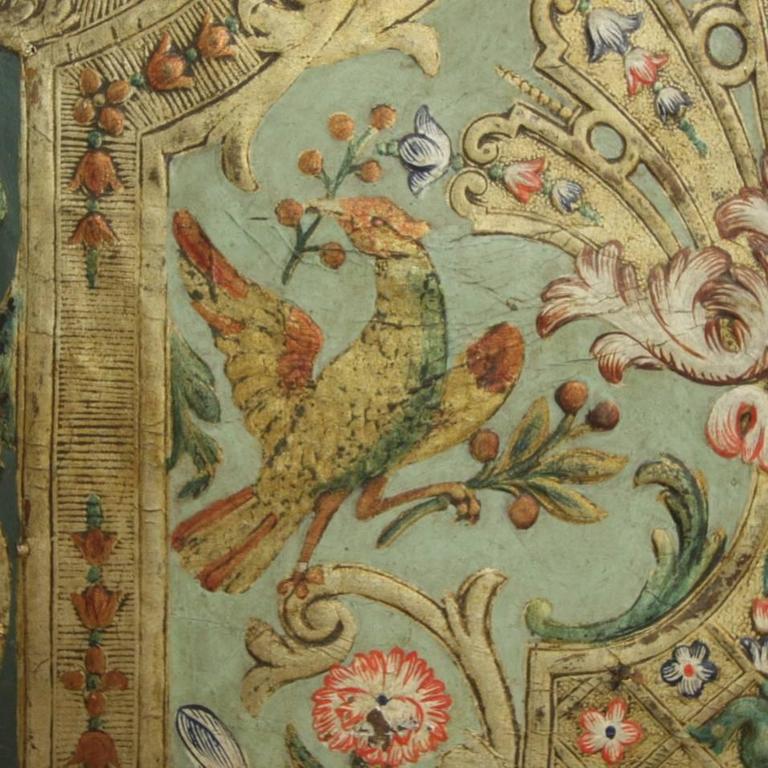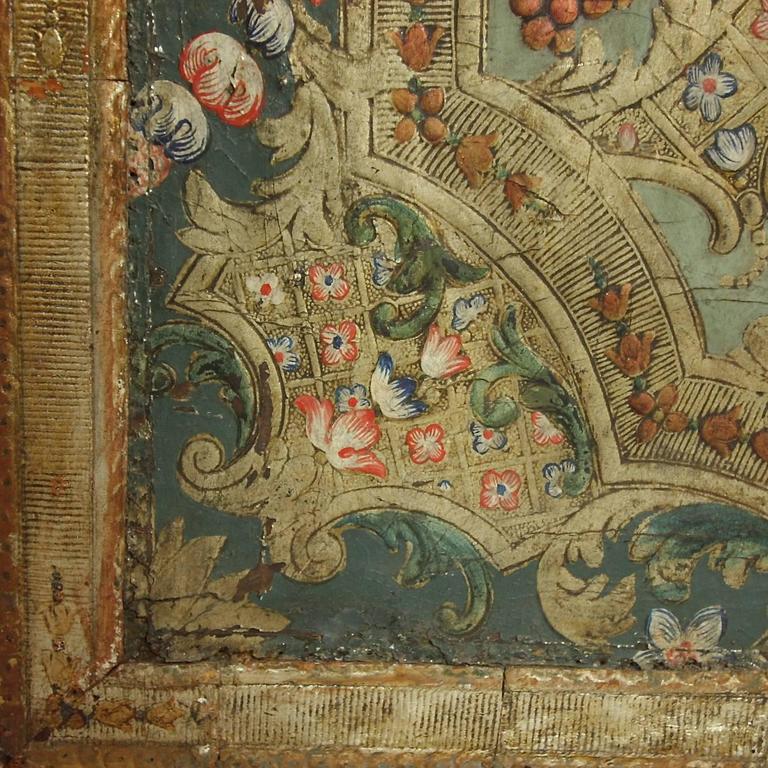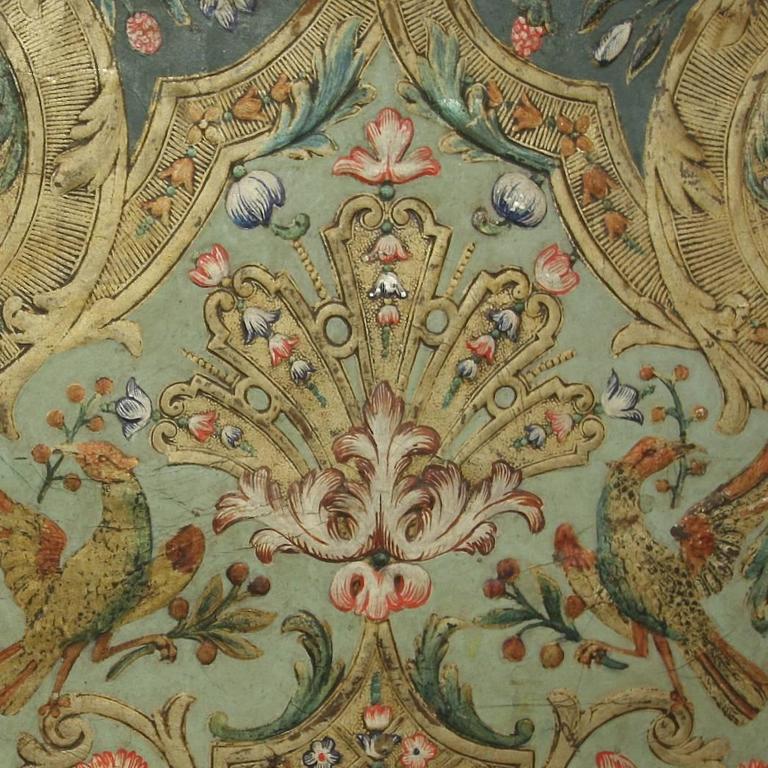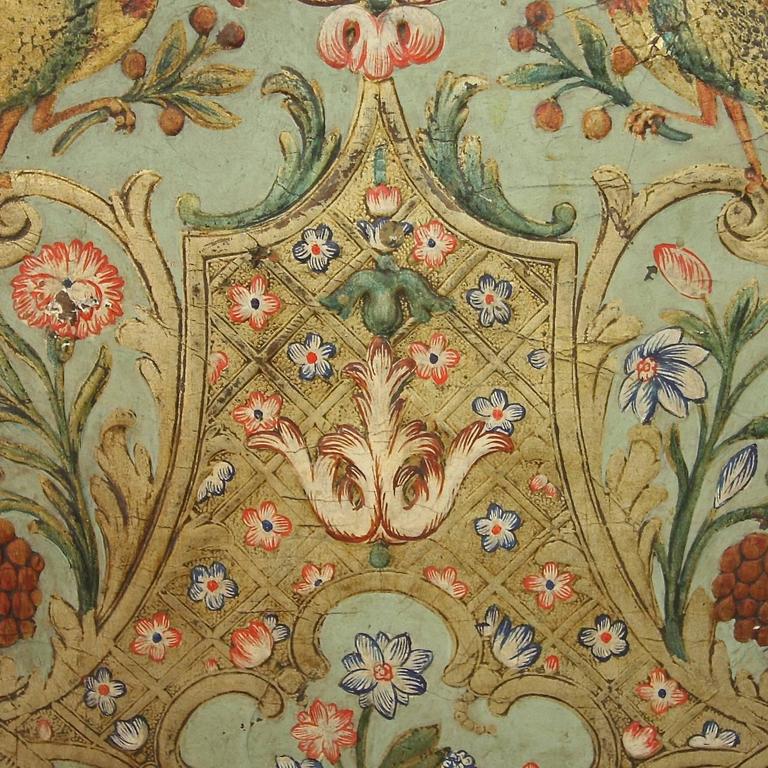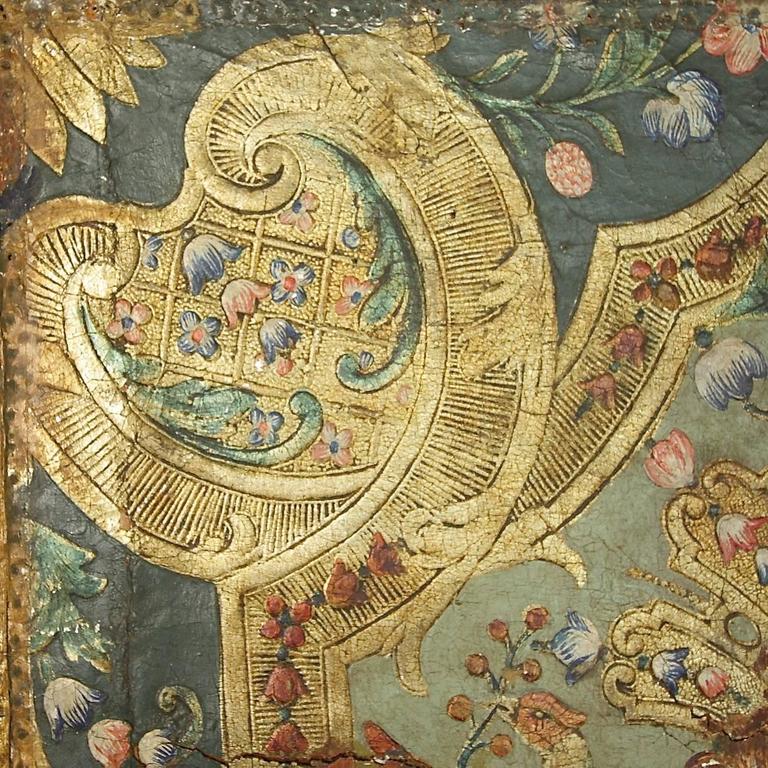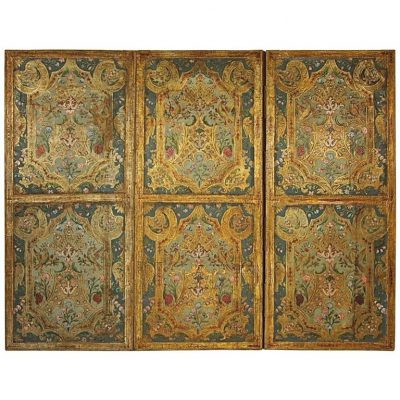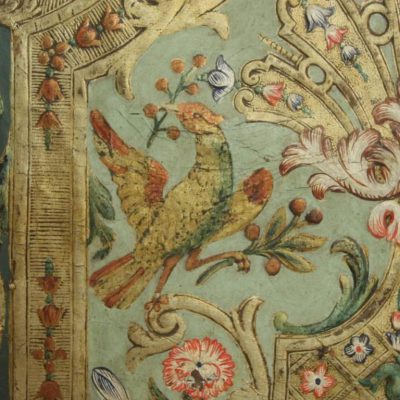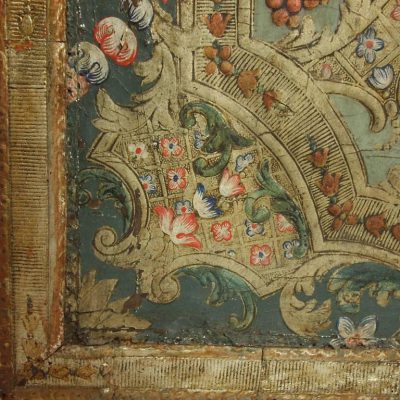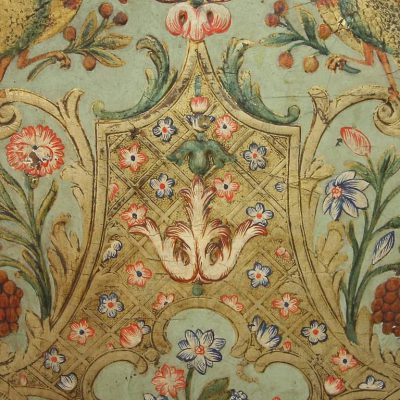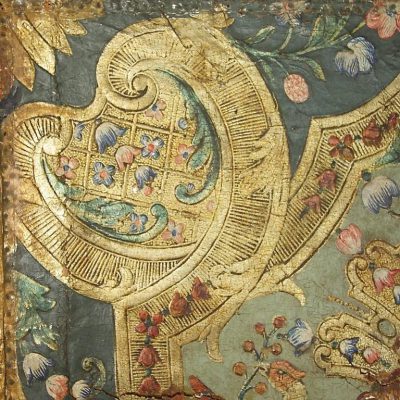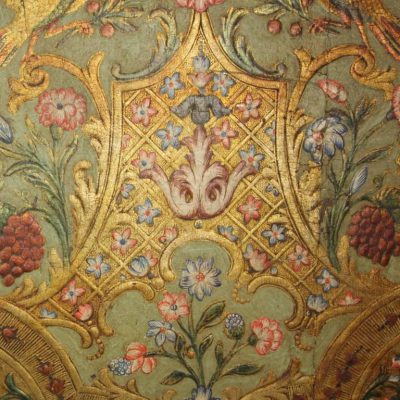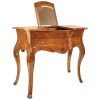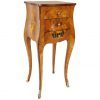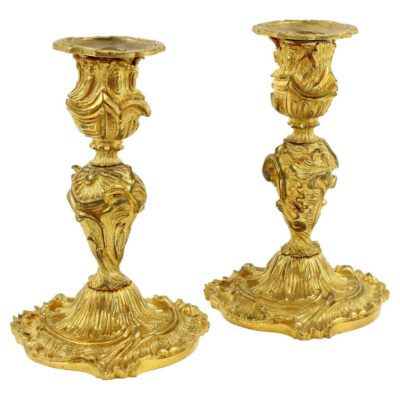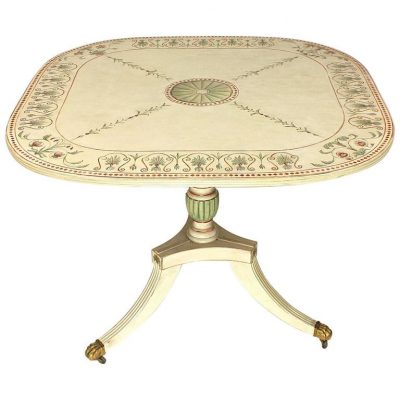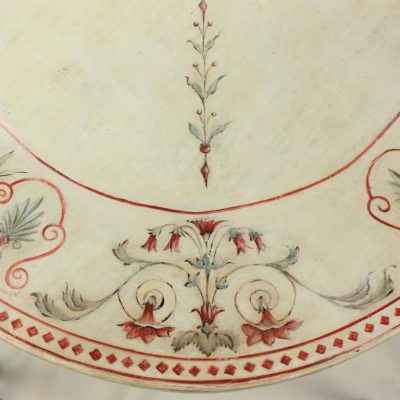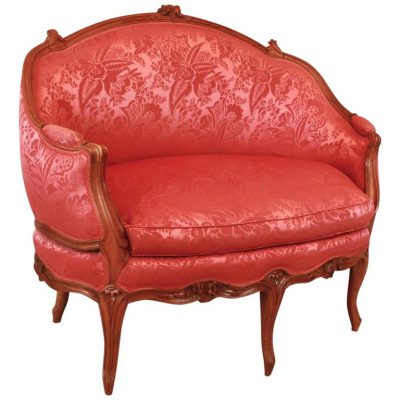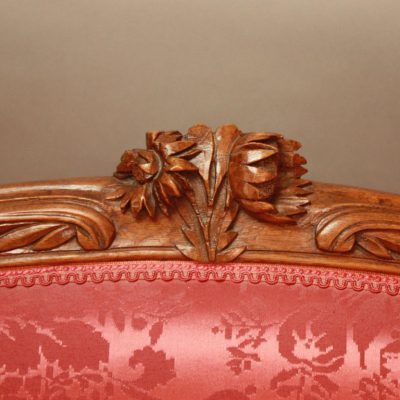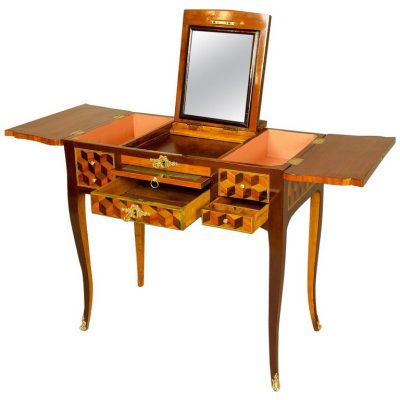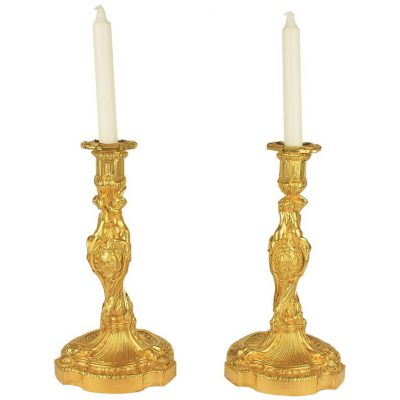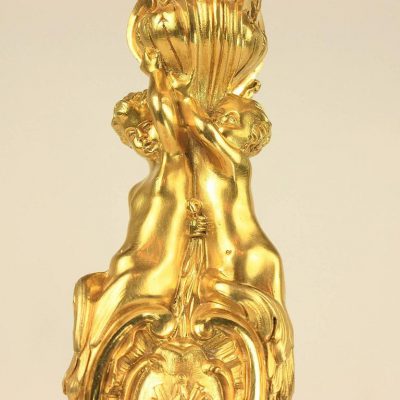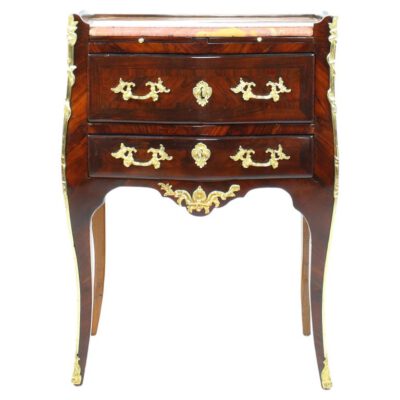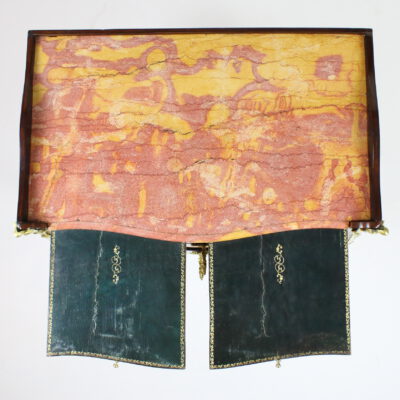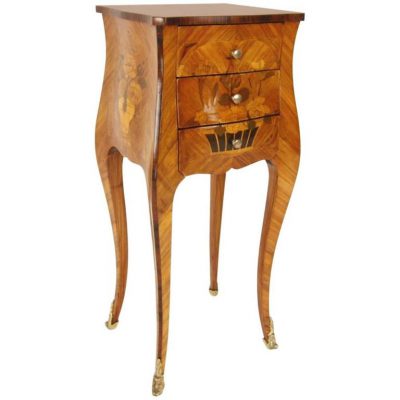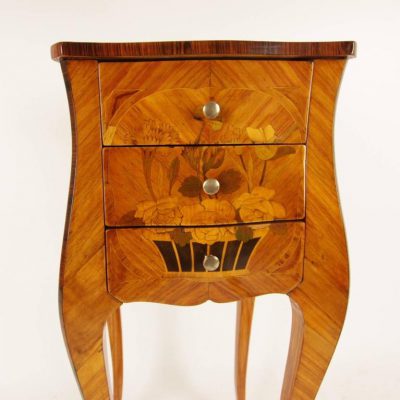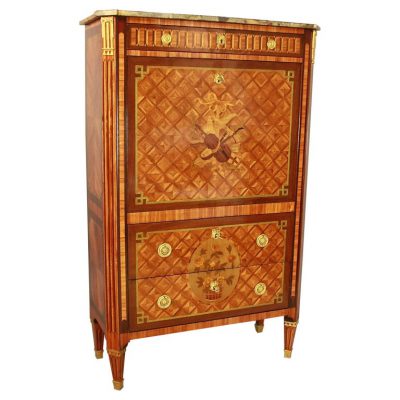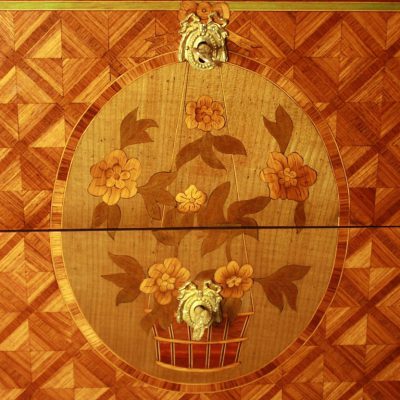A Baroque embossed and polychrome painted leather three-leaf screen after a design by French furniture designer, architect and engraver Daniel Marot (1661-1752). Each leaf comprising two identical rectangular panels, each with a central, shaped cartouche including a trellised plinth below a fan-shaped motif flanked by birds, the whole decorated with varnished silver leaf (imitating gilding) set against a pale blue ground (within the cartouche) and a dark blue ground (outside the cartouche), outlined with cross-reeded banding and interspersed with white and pink flowers on both the gilded areas as well as the blue background providing a light note to the design.
Mass-produced panels of leather, with embossed designs, became popular in many areas of Europe during the 17th century. By 1700 they were produced in very large numbers, particularly in the Netherlands. Daniel Marot, being a Huguenot, fled France and settled in Holland after the revocation of the edict of Nantes in 1685. His popular woven silk and velvets designs became the source of inspiration for gilded leather manufacturers in the Netherlands. They were made as wall hangings possibly executed by the workshop of Carolus Jacob (1693-1728) in the city of Malines (Mechelen). Several panels of that pattern have survived and are part of such prestigious collections such as the Franz Hals Museum, V&A, Tapetenmuseum Kassel, Kunstgewerbemuseum Dresden. They often vary in its finish with different coloured hand painting or different coloured varnishes. Our panels survived due to being converted from a wall hanging into a three leaf folding screen. Western traders in the Far East became acquainted with the beauty and utility of screens and took a special interest in the folding variety. Europeans then adapted the screen form to their own needs. The sophisticated design by Marot plays with the intricacies of a low relief, with coloured varnishes and matte paint, with a gilded raised surfaces in contrast to the combining pale and dark blue ground to form a Baroque spectacle.
See: Thümmler, Sabine: Die Geschichte der Tapete. Raumkunst aus Papier. Eurasburg 1998 Internet sources of The V&A and the Tapetenmuseum Kassel.
Condition: good, wear consistent with age and use, some later inpainting, some age related tears and previous restorations – detailed condition report on request


